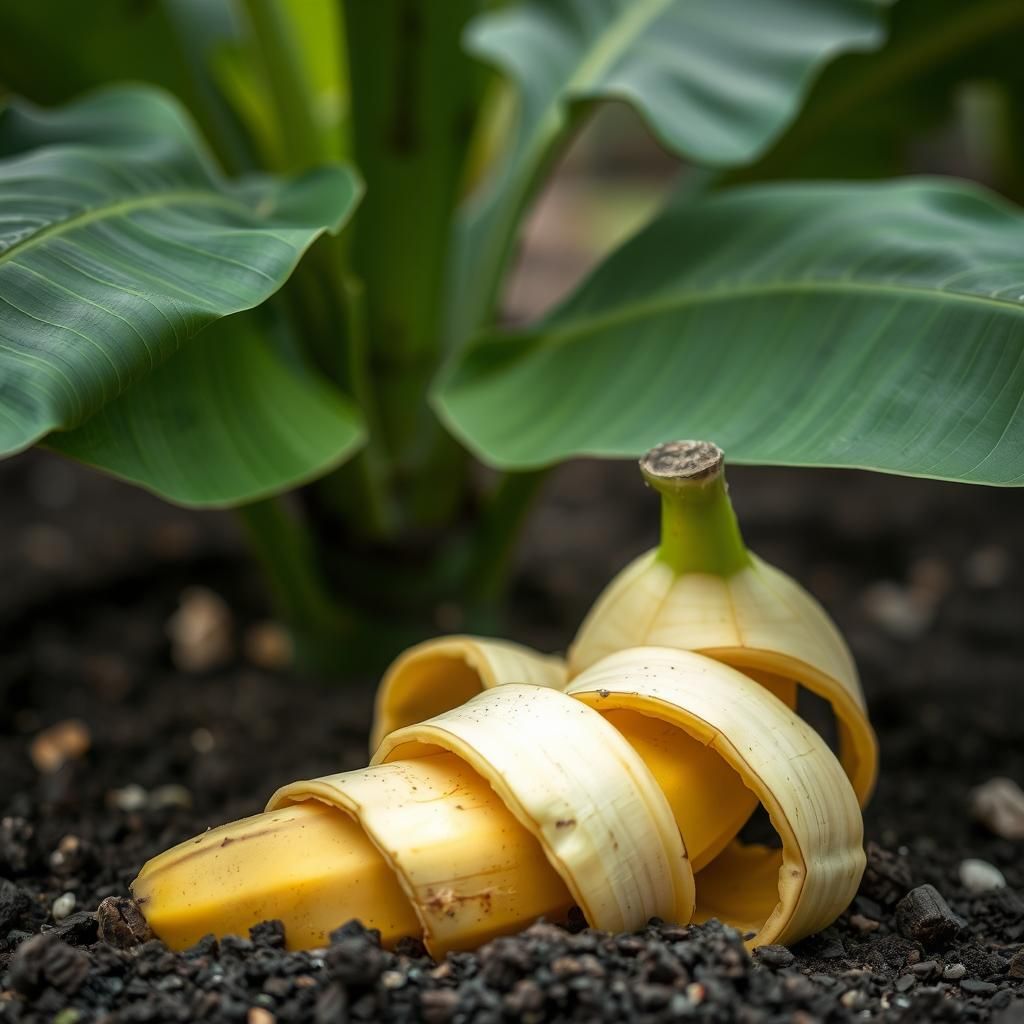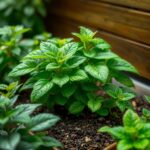What are the Disadvantages of Banana Peels as Fertilizer? Unveiling the Downsides for Your Garden

Banana peels are often lauded as a natural fertilizer packed with nutrients beneficial for plants. However, while their use in gardening is popular, there are significant disadvantages that gardeners should consider. This article aims to unveil the downsides of using banana peels as fertilizer, exploring potential issues such as nutrient imbalance, pests attraction, and environmental concerns. Understanding these drawbacks is essential for gardeners looking to optimize their soil health and plant growth. By examining the limitations of banana peels, we can make informed decisions about the best practices for garden fertilization.
Disadvantages of Banana Peels as Fertilizer
While banana peels are often touted for their potential benefits as a natural fertilizer due to their content of nutrients like potassium and phosphorous, there are several disadvantages to consider. One major drawback is that banana peels can attract pests, such as fruit flies and rodents, when left on the surface of the soil. Additionally, they decompose relatively slowly, which can lead to an inefficient release of nutrients for plants, delaying their availability. The presence of certain chemicals in the peels, potentially leftover from non-organic farming practices, may pose a risk to soil health if not properly subjected to composting. Furthermore, the excessive application of banana peels can result in an imbalance in soil nutrients, particularly potassium, which can adversely affect the growth of certain plants.
Pest Attraction
One of the significant disadvantages of using banana peels as fertilizer is their tendency to attract various pests. The sugary residue in the peels can draw in not only fruit flies but also insects and rodents that may harm plants and lead to a degenerative cycle of pest infestation. This can create an environment that necessitates additional pest control measures, thereby complicating the gardening process.
Slow Decomposition
Banana peels decompose at a relatively slow rate compared to other organic materials, which can hinder their effectiveness as fertilizer. This slow breakdown means that the nutrients contained in the peels, such as potassium and phosphorus, are not readily available to plants in the short term. Consequently, gardeners may not see immediate benefits, leading them to overapply or use alternative fertilizers that provide quicker nutrients.
Chemical Residues
Another concern with using banana peels as fertilizer is the potential presence of chemical residues from non-organic farming practices. If not sourced from organic bananas, the peels may contain pesticides and herbicides, which can adversely affect soil health and the surrounding ecosystem. This risk emphasizes the importance of understanding the origin of the banana peels being used, as well as the need for proper composting to mitigate this issue.
Nutrient Imbalance
Excessive application of banana peels can lead to a nutrient imbalance in the soil, particularly increasing the levels of potassium. While potassium is essential for plant health, too much can inhibit the absorption of other vital nutrients, such as nitrogen and magnesium. This imbalance can adversely affect plant development, particularly for those species that thrive in more balanced nutrient conditions.
Limited Nutrient Profile
The nutrient profile of banana peels, while beneficial in certain aspects, is somewhat limited. They primarily provide potassium with traces of phosphorus, but they lack essential nutrients like nitrogen, which is crucial for plant growth. A reliance on banana peels alone as a fertilizer can lead to deficiencies that might require supplemental fertilizers to correct, thereby negating some benefits of using banana peels in the first place.
| Disadvantage | Description |
|---|---|
| Pest Attraction | Banana peels can attract various pests, complicating garden management. |
| Slow Decomposition | The slow breakdown of peels leads to delayed nutrient release for plants. |
| Chemical Residues | Non-organic peels may carry harmful chemical residues affecting soil health. |
| Nutrient Imbalance | Excess potassium can lead to deficiencies in other essential nutrients. |
| Limited Nutrient Profile | Banana peels lack essential nutrients like nitrogen for optimal plant growth. |
Are banana peels bad for soil?

Banana peels are often touted as beneficial for soil, primarily due to their organic matter content and the nutrients they contain. However, whether they are bad for soil depends on various factors, including how they are used and the context in which they are applied.
One of the key nutrients found in banana peels is potassium, which is essential for plant growth and development. In addition to potassium, banana peels also contain calcium, phosphorus, and magnesium, all of which can contribute positively to soil health. When added to compost, banana peels break down over time and can enrich the compost with these nutrients, thus enhancing soil quality.
However, there are some considerations to keep in mind. If banana peels are not composted properly or are added in excessive amounts, they can attract pests and may lead to nutrient imbalances within the soil. Additionally, if they are placed directly in the garden without proper treatment, they may not decompose quickly enough and can undergo anaerobic decomposition, which might produce unpleasant odors and attract pests.
Nutrient Content of Banana Peels
The nutrient content of banana peels makes them appealing for use in gardening and agriculture. They are especially rich in:
See also:
- Potassium: Important for water regulation and overall plant health.
- Calcium: Essential for cell wall structure and growth.
- Phosphorus: Crucial for energy transfer and storage in plants.
This nutrient profile can be beneficial when integrated into soil.
Composting Banana Peels
Composting banana peels is an effective way to use them, as this process allows for their nutrients to be released gradually into the soil. Effective composting involves:
- Chopping the peels into small pieces to accelerate decomposition.
- Mixing them with a variety of other organic materials to maintain balance.
- Maintaining proper moisture and aeration to promote effective microbial activity.
Proper composting minimizes potential problems while maximizing nutrient retention.
Potential Pest Attraction
One downside of using banana peels directly in gardens is their potential to attract pests. This can occur through:
- Odors emitted during decomposition, which may attract fruit flies and other insects.
- The presence of decomposing material attracting larger pests, such as rodents.
- The direct contact of banana peels with soil potentially leading to fungal growth.
Managing these aspects can help mitigate pest-related issues.
Soil Health and Balancing Nutrients
Although banana peels offer benefits, they should be used sensibly to maintain soil health. Important practices include:
- Using banana peels as part of a balanced mix of organic materials.
- Regularly testing soil to ensure nutrient levels are adequate and balanced.
- Observing plant responses to amendments and adjusting accordingly.
Maintaining balance is essential for optimal soil health.
Environmental Impact of Disposal
Disposing of banana peels through composting or soil amendment has positive environmental implications:
- Reduces waste and contributes to biodegradable material in landfills.
- Encourages sustainability by utilizing kitchen scraps for soil health.
- Supports soil biodiversity through the introduction of organic matter.
These practices can have a favorable environmental impact while benefiting the garden.
Is banana peel fertilizer good for all plants?

Banana peel fertilizer can be beneficial for many types of plants due to its rich nutrient profile. However, while it offers numerous benefits, it is not universally suitable for all plants. Here's a detailed examination of various aspects concerning the effectiveness of banana peel fertilizer across different types of plants.
Benefits of Banana Peel Fertilizer
Banana peels are an excellent source of nutrients, particularly potassium, phosphorus, and calcium. These minerals are essential for plant growth and development. The key benefits include:
See also:
- Potassium: Essential for water regulation and overall plant health.
- Phosphorus: Important for root development and flowering.
- Calcium: Helps in maintaining cell wall integrity.
Plants tend to thrive when these nutrients are available, making banana peel fertilizer a popular organic option.
Ideal Plants for Banana Peel Fertilizer
Certain plants may respond particularly well to banana peel fertilizer. Ideal candidates include:
- Tomatoes: They benefit from the potassium, which promotes fruit development.
- Peppers: The nutrients in banana peels help enhance their growth and flavor.
- Rose bushes: Potassium can boost flowering and disease resistance.
These plants generally show improved performance when banana peel fertilizer is used.
Plants That May Not Benefit
While many plants enjoy banana peels, some may not see significant benefits. These include:
- Carnivorous plants: They require proteins rather than high potassium levels.
- Acid-loving plants: Such as blueberries and azaleas may not thrive due to the low acidity of banana peels.
- Certain herbs: For instance, basil might not require the extra nutrients that banana peels provide.
Using banana peel fertilizer for these plants may lead to nutrient imbalances.
Preparation Methods for Banana Peels
The way banana peels are prepared can influence their effectiveness as fertilizer. Some common methods include:
- Chopping and composting: Smaller pieces break down faster, enriching the compost.
- Dried and powdered: Powdered banana peels can be directly added to the soil.
- Soaking in water: Banana peel tea can be a liquid fertilizer, providing nutrients quickly.
These preparation methods enhance the nutrient availability for plants.
Risks of Overusing Banana Peel Fertilizer
Although beneficial, excess use of banana peel fertilizer can pose risks, including:
- Nutrient overload: Too much potassium can inhibit the absorption of magnesium and calcium.
- Pest attraction: Decomposing peels can attract pests such as fruit flies.
- Soil imbalance: Overuse can alter soil pH and nutrient levels.
It's crucial to apply banana peels in moderation to avoid these potential issues.
Questions from Our Readers
What are the disadvantages of using banana peels as fertilizer?
Using banana peels as fertilizer can have some disadvantages, such as the limited nutrient content compared to other organic materials. While banana peels are a good source of potassium and phosphorus, they lack nitrogen, which is essential for plant growth. Additionally, using only banana peels may not provide a well-rounded nutrition for plants.
Can banana peels attract pests when used in gardens?
Yes, banana peels can attract pests like fruit flies and other insects when they decompose in the garden. The sweet smell of the peels can lure these pests, which may lead to potential infestations. It’s important to balance their use with other materials to minimize this risk.
Do banana peels decompose quickly enough in composting?
Banana peels can decompose relatively quickly, but they may take longer than other soft kitchen scraps due to their thickness and moisture content. When added to a compost pile, it's beneficial to chop them into smaller pieces to encourage faster decomposition and to ensure an even breakdown with other compost materials.
See also:
There are no significant health concerns directly associated with the use of banana peels in gardens if they are used correctly. However, there may be concerns regarding the pesticide residues on conventional bananas, so it's advisable to use organic peels or thoroughly wash them before use to ensure safety in your garden.

If you want to read more articles like What are the Disadvantages of Banana Peels as Fertilizer? Unveiling the Downsides for Your Garden, we recommend you check out our Fertilisers category.
Leave a Reply
Related Articles